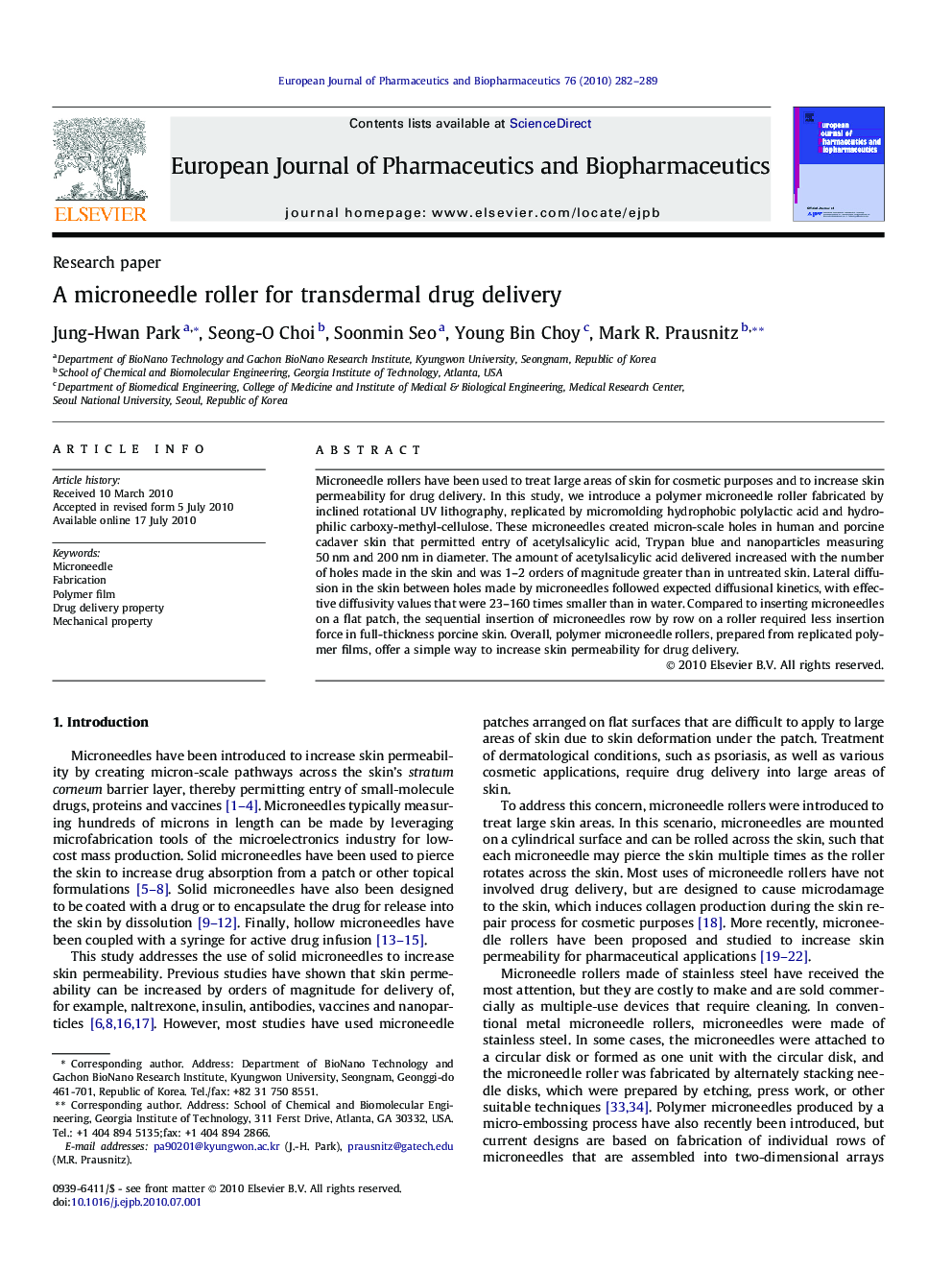| کد مقاله | کد نشریه | سال انتشار | مقاله انگلیسی | نسخه تمام متن |
|---|---|---|---|---|
| 2084324 | 1545375 | 2010 | 8 صفحه PDF | دانلود رایگان |

Microneedle rollers have been used to treat large areas of skin for cosmetic purposes and to increase skin permeability for drug delivery. In this study, we introduce a polymer microneedle roller fabricated by inclined rotational UV lithography, replicated by micromolding hydrophobic polylactic acid and hydrophilic carboxy-methyl-cellulose. These microneedles created micron-scale holes in human and porcine cadaver skin that permitted entry of acetylsalicylic acid, Trypan blue and nanoparticles measuring 50 nm and 200 nm in diameter. The amount of acetylsalicylic acid delivered increased with the number of holes made in the skin and was 1–2 orders of magnitude greater than in untreated skin. Lateral diffusion in the skin between holes made by microneedles followed expected diffusional kinetics, with effective diffusivity values that were 23–160 times smaller than in water. Compared to inserting microneedles on a flat patch, the sequential insertion of microneedles row by row on a roller required less insertion force in full-thickness porcine skin. Overall, polymer microneedle rollers, prepared from replicated polymer films, offer a simple way to increase skin permeability for drug delivery.
Polymer microneedle rollers, prepared from replicated polymer films, offer a simple way to increase skin permeability for drug delivery. The diagram shows the fabrication process of a microneedle roller from a polymer film: (a) inclined rotational UV exposure, (b) PDMS female mold, (c) molded polymer microneedles, (d) microneedle roller prepared by softening the polymer film.Figure optionsDownload as PowerPoint slide
Journal: European Journal of Pharmaceutics and Biopharmaceutics - Volume 76, Issue 2, October 2010, Pages 282–289